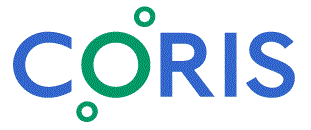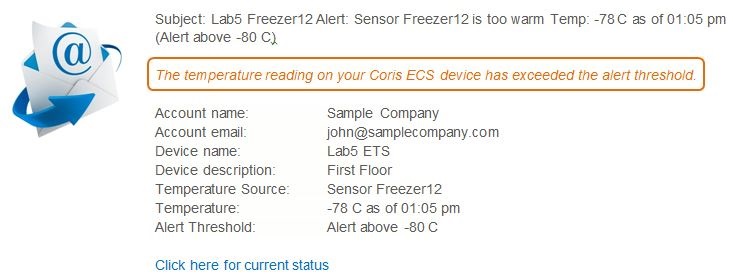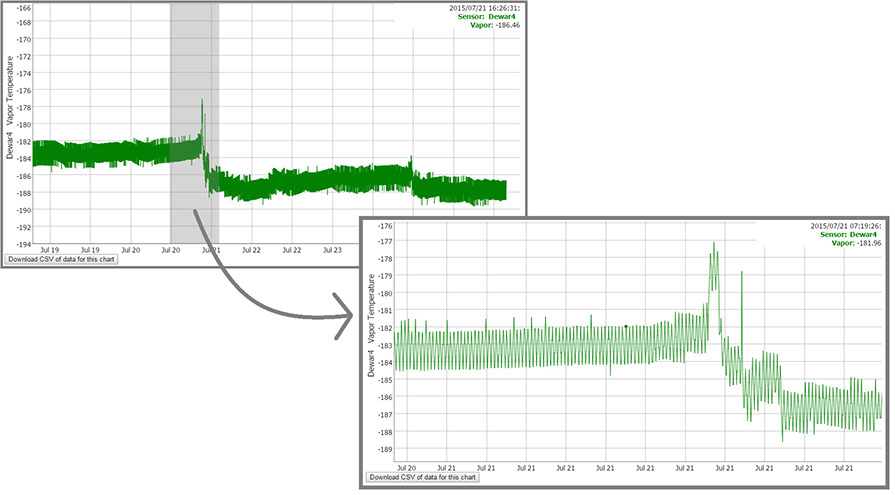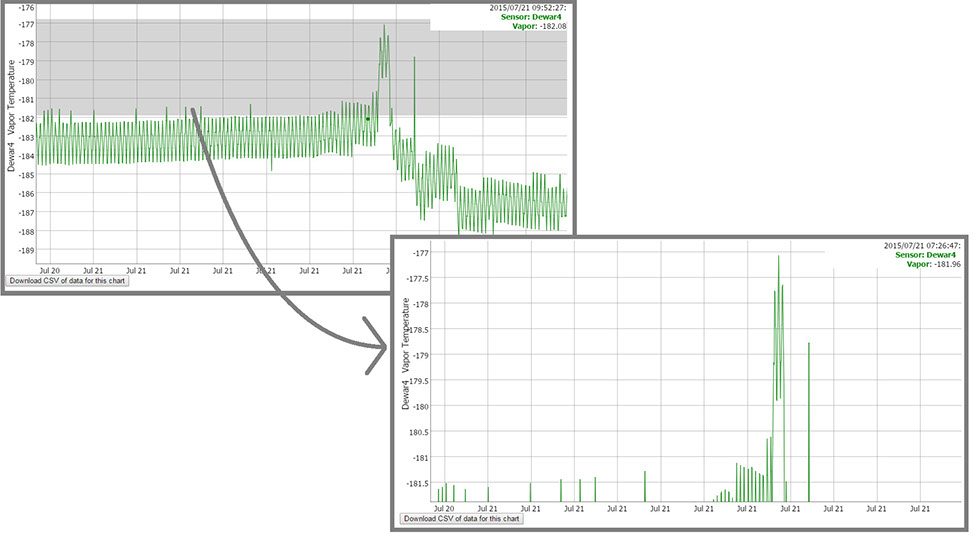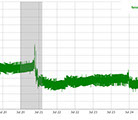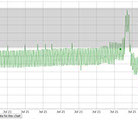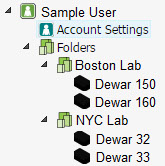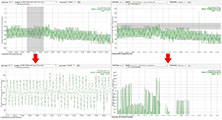Are your samples safe when you're away?
temperature monitoring and alerts for LIFE SCIENCES
- Prevents loss of your irreplaceable research, specimens, and samples
- Alerts notify appropriate researchers and facilities staff when temperatures reach critical limits
- Alert method (email, text, and/or phone call) and active time of day can be tailored per recipient
smart
- Easy to install—DIY simplicity, "plug-and-play" installation
- Easy to set up—sensors start monitoring as soon as they are powered up, just name sensors and set up alerts
- Easy to operate—web-based alert set up, reporting, and graphs
simple
- All sensor data is encrypted during transmission to Coris servers and is permanently logged
- No local sensor control unit or server that can be hacked or require a "hole" in your firewall for remote access
- All sensor logs are maintained on secure servers in secure data centers in the cloud—cannot be altered by users
secure
we help protect your specimens
(-250°C to +250°C)
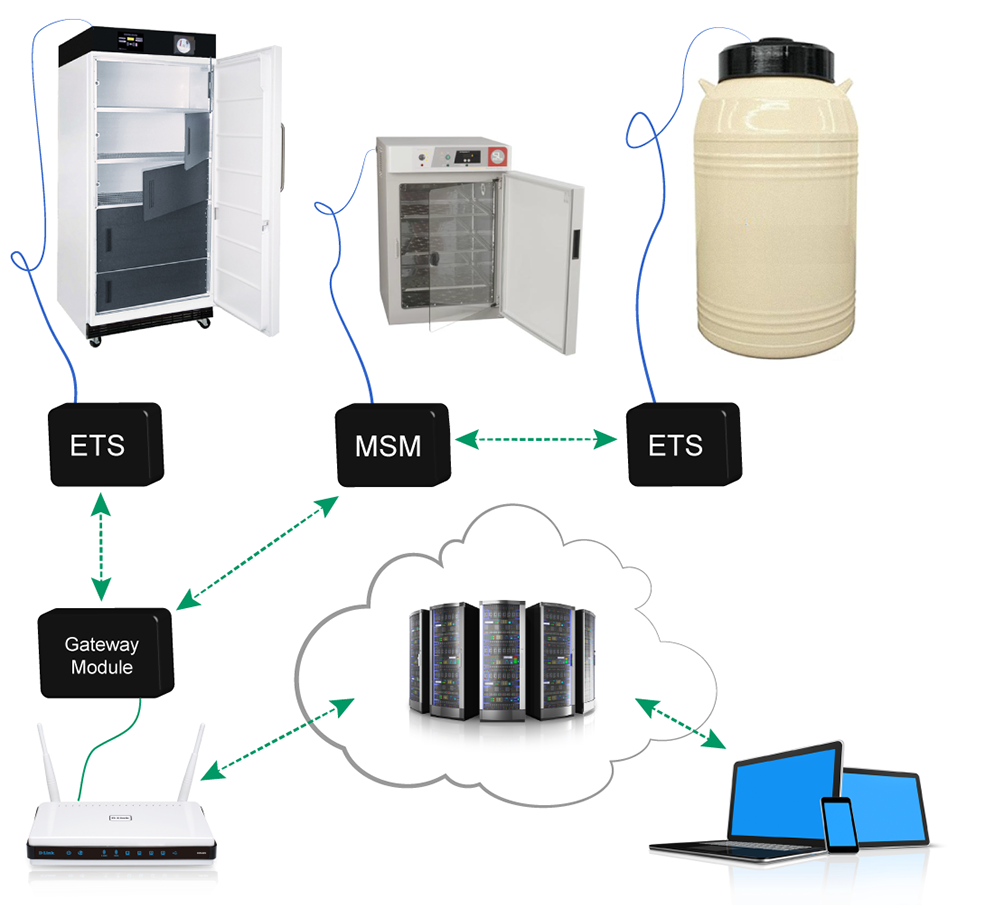
Coris' encrypted wireless mesh network enables your sensor modules to communicate with one another to reach a Gateway. This allows one Gateway to support 35 Coris devices.
Sensors that monitor temperature, humidity, and/or contact closure are installed in your freezers or incubators.
Once your Coris Gateway is connected to a router with an Ethernet cable, it automatically connects to Coris servers on the Internet.
Secure Coris servers record all data received from sensors—accessible anytime, anywhere.
View real-time or logged sensor information or adjust settings from multiple platforms and devices.
“After the scare we had when a freezer failed on a weekend, we are glad we purchased the Coris temperature monitoring systems to warn us of any future problems.”
—Dawn Shively, U.S. Geological Survey
Coris in the lab
Power Outage Protection
Hurricane Sandy knocked out power in a lab for more than eight days, and innumerable research samples were ruined when ultra low freezers shut down. Back-up generators were since installed, and Coris ETS modules were installed to provide temperature monitoring and permanent logging as well as multi-method alerting capacity so that all appropriate lab personnel (individual researchers, principal investigator, facility management staff) will be notified if any of the freezers has a problem that results in a change of temperature. Further, these alerts automatically escalate until someone takes responsibility for dealing with the problem. The goal—no more lost research samples.
Federal Research Lab
A small, remote federal research lab with a few cryo freezers has been planning an upgrade to their lab, with all personnel participating in the planning. One of the researchers realized she left her planning notebook in the lab over the weekend; when she went to the lab to pick it up, she realized the temperature warning alarm on one of the freezers was sounding. She put the key samples that were at risk into an ice chest and added liquid nitrogen to keep everything frozen—saving the day. On Monday morning, the principal investigator researched temperature monitoring and alerting systems, received pricing and capability information from the most promising vendors, and then ordered Coris Extreme Temperature Sensors to monitor the freezers.
Medical School
A medical school consolidated most of their ultra low temperature freezers into a “freezer farm” with a large back-up generator to ensure all the freezers will never lose power. Each freezer temperature alarm was tied into the building’s management system to detect freezer problems. Small labs in other buildings on campus implemented Coris ETS systems to provide the freezer “alarm” feature, and also have detailed temperature logs, which the central alarm system does not have.
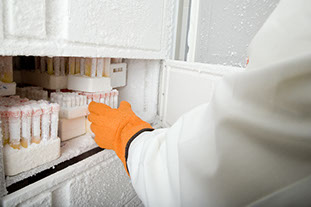
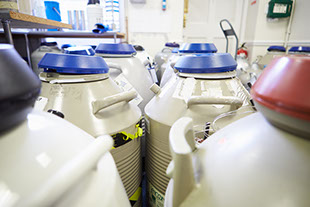
FAQs
How do I install Coris temp sensors?
Place the sensor in the device to be monitored, plug the other end into a local Coris MSM or ETS, and plug its power adapter into a wall outlet. The MSM or ETS will automatically start sending readings to the Coris servers.
Can I monitor two ultra cold freezers with one ETS?
Yes, each ETS has two independent thermocouple ports. While the standard Coris thermocouple is 72 inches long, custom sizes up to 300 inches are available—so the freezers don't need to be right next to one another.
Can I monitor liquid phase LN2?
Yes, there is a specially-designed thermocouple with a stainless steel shaft that will withstand long-term exposure to liquid nitrogen (-196°C). Most LN2 dewars have an access port for an external temperature probe. Standard Coris Type T thermocouples will monitor temperatures from -250°C to +250°C.
Is there a limit to the number of units I can monitor?
No, you can keep adding Coris ETS modules to an account to monitor any number of units. Each ETS module has two independent thermocouple ports, up to 35 ETS modules can share one Coris Gateway module, and there is no limit to the number of Gateway modules that can be active at any installation site.
What do I need to get started?
You will need an Internet connection, a Coris Extreme Temperature Sensor (ETS) module, a Coris thermocouple, a Coris Gateway, module, and wall outlets (for the power adapters for the ETS and Gateway). Each ETS can monitor two thermocouple sensors, and each Gateway can support up to 35 ETS modules!
Other questions?
Check out our FAQ page.
For more info, call us at 212-710-2973 or email info(at)corisecs(dot)com
© 2018 Coris
